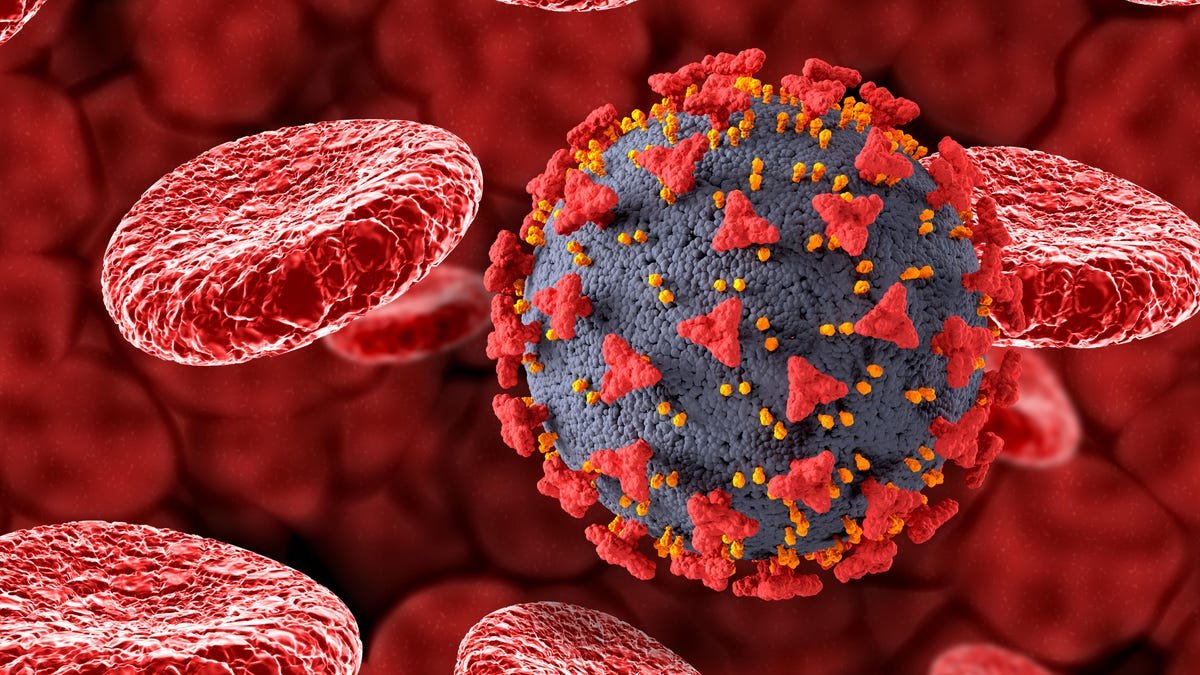
How Blood Type Can Increase Your Risk of COVID-19
[ad_1]
Though pioneering post-hardcore band Thrice might have you believe “we all bleed the same red blood,” the truth is a little more nuanced. Our blood cells are mostly the same, but they’re covered in surface proteins that give rise to the different blood types: A, B, AB, O and the positive and negative types associated with Rhesus factor, or Rh.
Those tiny differences play a role in our risk for certain health conditions – including, for instance, how susceptible we might be to heart disease or infection – because the proteins aren’t just expressed on blood cells, but across different cells in the body. When the SARS-CoV-2 virus, which causes COVID-19, first appeared in 2019, doctors and scientists began to notice a curious association between blood type and infection risk.
Numerous studies investigated the link, dating back to the earliest days of the pandemic. In May 2020, Chinese researchers explored the association between blood groups and risk of COVID-19 and found that people with blood group A were infected more than healthy controls, whereas blood group O was lower. In October 2020, a study published in Blood Advances, and another published in The New England Journal of Medicine found similar results.
Though the COVID-19 public health emergency was declared over in the US on May 11, the virus still circulates worldwide. According to the World Health Organization, since the start of the pandemic almost 7 million people have lost their lives. About one in three patients struggle with long COVID, lingering effects from the disease that can result in muscle weakness or cognitive problems.
The observational studies from 2020 provided evidence that blood group A was associated with COVID-19 infection while blood group O was somewhat protective. However, a handful of studies suggested this might just be a spurious result based on the patient groups studied, and a mechanism that could give rise to this relationship was elusive.
A new study, published in the journal Blood on June 27, describes a potential mechanism, providing evidence that SARS-CoV-2 preferentially binds to the surface proteins associated with blood group A. It seems this blood type might enhance the ability for the virus to enter a cell.
To infect a cell, SARS-CoV-2 uses its spike protein to bind to a protein on the surface of a cell, known as ACE2. In a lock-and-key scenario, the spike protein’s “receptor binding domain,” or RBD, acts as a key, recognizing the lock of ACE2. This enables the virus to sneak through the cell membrane and begin replicating. A variety of different proteins are involved in this process, and before unlocking entry via the main lock of ACE2, the virus might try a few different keyholes. It appears the protein associated with blood type A is just the right size to snag the virus.
“This interaction appears to make the blood group A cells more ‘sticky’ for the spike protein and therefore the SARS-CoV-2 virus, which ultimately enhances its ability to engage ACE2 and infect cells,” says Sean Stowell, associate professor of pathology at Harvard Medical School and author of the new study.
Stowell and his colleagues were able to illuminate this mechanism by genetically engineering hamster cells to express both ACE2 and a variety of different blood group antigens including group A and group O. “We engineered cells to express the same levels of ACE2 and therefore only differ in the A or O blood group status,” notes Stowell. The researchers then added a strain of SARS-CoV-2 – either the original Wuhan strain, the delta variant or the omicron variant – and assessed the level of infection of the cells.
They found that, in all strains, the cells with blood group A proteins showed much higher levels of infection. In addition, the omicron variant showed the highest selectivity for blood group A individuals. To confirm the effect they were seeing, researchers also used another protein to block blood group A binding by the virus. When blood group A was blocked, there were no differences in infection between the group A and group O blood types.
“This direct interaction with blood group A may account for the epidemiological data throughout the pandemic demonstrating that blood group A individuals are more likely to get infected with SARS-CoV-2 than blood group O individuals,” says Stowell.
What does it mean for people with blood type A?
Three years on from the beginning of the pandemic, we’re still learning exactly how SARS-CoV-2 became such a devastating microscopic adversary. Our blood types make us slightly different (sorry again, Thrice), but they aren’t the only risk factor.
If you’re one of the 30% with blood type A, the results may seem a little concerning. “On average, everything else being equal, people who are blood group A may be 20% more likely to become infected than blood group O,” explains Stowell. However, he says, it isn’t possible to currently assess the risk of infection, because COVID-19 risk is related to a number of variables including age, weight, ACE2 levels, lifestyle and other underlying medical conditions.
On the other hand, it might seem like this is positive news for people with blood type O blood, but it’s important to note this blood group doesn’t make you immune to SARS-CoV-2. You can still be infected.
Getting infected is also related to the physical reality of being close to an infected person for long periods of time. Because SARS-CoV-2 travels via air, being in well-ventilated spaces or outdoors and wearing a mask lowers the risk of infection. Vaccinating yourself against the virus also provides the best way to reduce the risk of infection and, importantly, of severe complications from the disease, like hospitalization and death. Those precautions should be taken regardless of your blood group.
[ad_2]
Source link


